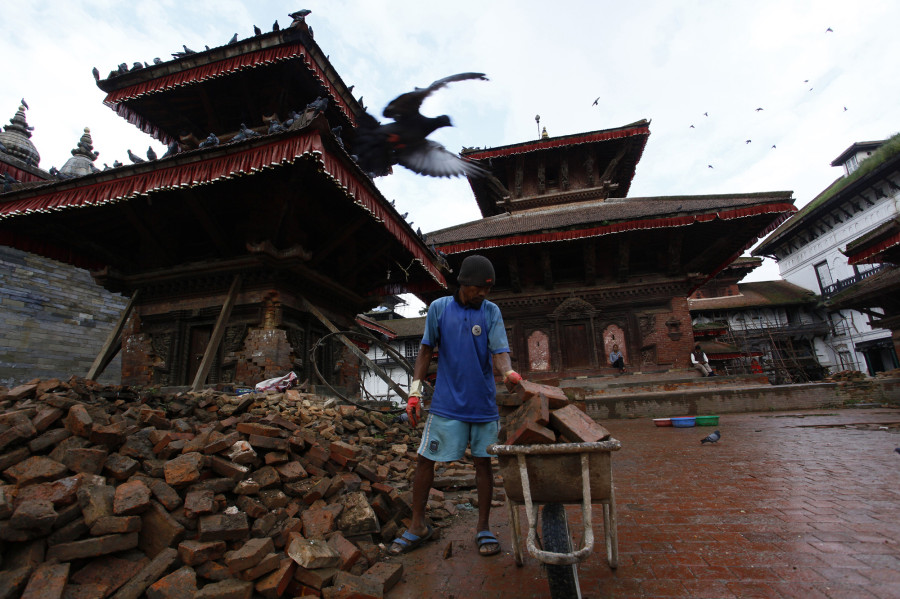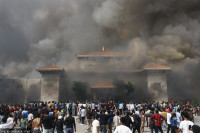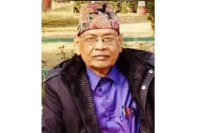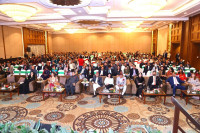Valley
UNESCO withdraws from reconstruction of two temples in Basantpur area
Locals and conservationists have been critique of the government decision to allow foreign agencies to rebuild the heritage sites.
Chandan Kumar Mandal
The United Nations Educational, Scientific and Cultural Organisation (UNESCO) has withdrawn from the restoration of Jagannath and Shree Krishna Mahavishnu temples, which were damaged in the 2015 earthquakes, following concerns of the locals and the heritage conservationists.
In a press statement issued on Tuesday, the UNESCO office in Kathmandu has regretted its decision to withdraw from the restoration which it called “a part of its wider programme for assisting the Nepal government in carrying out the post-earthquake rehabilitation of its built heritage in accordance with international conservation standards.”
“UNESCO is saddened to withdraw from the restoration project of these two important temples within the Kathmandu Valley World Heritage Site,” Christian Manhart, UNESCO Representative to Nepal said in the statement.
Locals and heritage conservationists have long been raising concerns over the government decision of handing over historical sites like these temples to various foreign governments and other agencies for reconstruction, which they fear will disturb the originality of these monuments.
“All these UNESCO World Heritage Sites and other sites are our unique and rich heritage. They represent our glorious tradition. Reconstruction of these sites should be done by our own government with our own funds,” said Ganapati Lal Shrestha, a local heritage conservationist. “But we have distributed responsibilities among various governments. For instance, retrofitting of Gaddi Baithak was carried out by the US, Nine-Storey Durbar is being done by China and Kumari Ghar will be done by India.”
The restoration of these two temples, which was being implemented by UNESCO, in association with the Department of Archaeology, and with funding from the Japanese Government and Nepal Investment Bank Limited, had started on December 10, 2018.
However, nearly two weeks into the launching of the project, the work came to a halt on December 23 following pressure from the local residents that these sites be restored through local resources.
“Locals had been saying that since UNESCO is a monitoring agency, it should play its part in supervision rather than reconstructing the site,” said Aruna Nakarmi, chief of the Hanumandhoka Durbar Maintenance Office. “Locals wanted the restoration work to be done through forming a local consumer committee. They think engaging local stakeholders will make the reconstruction and conservation works more effective.”
Even four years after the earthquake, the government’s reconstruction drive has been sluggish. The progress in terms of rebuilding heritage sites has also lagged behind.
According to the UNESCO statement, after a series of meetings with the government officials, locals, and Member of Province 3 Parliament Rajesh Shakya, the matter was temporarily resolved and work resumed on May 15, 2019, only to be stopped again.
“However, threats were made by some locals a few days later to the restoration workers on-site,” reads the statement. “UNESCO therefore decided that the project had to be closed.”
The Department of Archaeology, the government body responsible for preservation and protection of monuments and archaeological sites, said that it was aware of dissatisfaction on the part of locals over the government decision to hand over the reconstruction of heritage sites to foreign government-funded agencies.
“Shortly after the earthquakes in 2015, the government devised a policy of handing over the reconstruction of these sites to such agencies. The latest development is the outcome of the policy lapses,” said Damodar Gautam, acting director general at the archaeology department.
“Local stakeholders might have felt a lack of ownership in the project. They wanted the work to be done through the consumer committee. Now, we need to explore other options to complete the project.”
Both the temples were being retrofitted. UNESCO said that Gopinath temple, however, required support for the entire structure during repairs of the ground floor walls.
Their designs, prepared by a team of local conservation experts, in close consultation with the Department of Archaeology, ward officials, local communities and priests, were intended at conserving the original structure and its elements, as well as strengthening both buildings to make them earthquake resilient, according to the statement.
Shrestha has called on the government to rebuild these temples from the funds it collects from the foreign visitors to the sites.
“We can raise enough funds for the reconstruction of heritage sites,” said Shrestha. “The government should invest to make up any shortfall.”




 8.12°C Kathmandu
8.12°C Kathmandu










